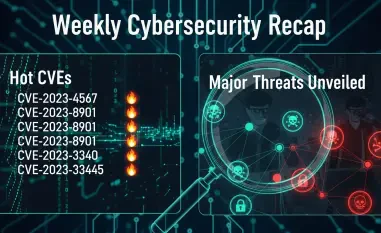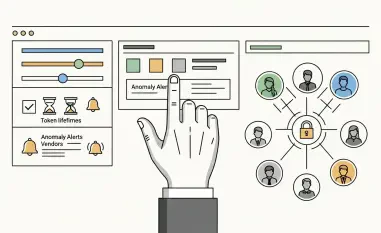In today’s rapidly evolving business landscape, reliance on Software as a Service (SaaS) platforms is greater than ever. These platforms have revolutionized operational efficiency by simplifying processes such as collaboration, deployment, and infrastructure management. However, as their adoption grows, a crucial concern emerges: are the built-in protections within these platforms sufficient for ensuring data resilience? Although SaaS providers offer a range of built-in security measures, these are primarily focused on maintaining uptime and application security. This emphasis often leaves the aspect of data protection and resilience in the hands of the user, posing a significant challenge in an era where cyber threats and data vulnerabilities are more sophisticated than ever.
Shared Responsibility and Rising Complexities
SaaS operates on a shared responsibility model where the service provider assures network or application security, but data protection largely remains the user’s duty. With businesses operating in complex IT environments, managing this responsibility becomes increasingly daunting. Modern infrastructures often involve hybrid architectures comprising multi-cloud systems that are geographically dispersed. These setups present unique challenges in data management and recovery. Regulatory frameworks like GDPR, HIPAA, and NIS2 further necessitate that businesses demonstrate a strong capability to restore, retrieve, and efficiently report data. However, the default configurations of many SaaS platforms might not offer the depth required for such compliance, leading to vulnerabilities and possible noncompliance penalties that can be financially debilitating.
The multifaceted nature of these challenges is compounded by cybersecurity threats such as ransomware and insider risks. As businesses transition more functionalities to the cloud, attackers are continually finding innovative methods to exploit weaknesses within SaaS environments. Moreover, the reliance on these platforms often leads to a decentralized sprawl of data, complicating the implementation of consistent protection measures. These layers of complexity require organizations to possess robust strategies that go beyond basic SaaS offerings, focusing on advanced integration and security measures that align not only with operational needs but also with stringent legal standards.
The Inadequacy of Built-In Protections
Despite offering an array of security features, many SaaS platforms fall short in catering to the nuanced needs of data resilience. The built-in protections are generally aligned with priorities like collaboration and high performance. Unfortunately, this often means resilience features, such as detailed recovery protocols, are not as developed. As a result, businesses may find themselves ill-prepared to handle unexpected data disruptions. These disruptions can stem from seemingly minor human errors that lead to significant loss or corruption of data. The available recovery options may not suffice in these scenarios, prompting the need for additional protective layers.
Legal and compliance demands further underscore the inadequacies of relying solely on native SaaS safeguards. The ability to demonstrate comprehensive data recovery capabilities is often mandated by regulatory bodies. However, many SaaS solutions do not provide the granular visibility or control necessary for compliance, and businesses may struggle to meet these critical requirements. Beyond the potential legal repercussions, data losses can significantly hinder operational efficiency and erode customer trust. A misjudgment in the perceived reliability of built-in features can thus lead to severe organizational and reputational damage.
Human Error and Internal Threats
Human error is a significant factor contributing to data loss within SaaS environments. Employees, despite best intentions, can accidentally delete critical information or misconfigure data synchronizations, leading to potentially catastrophic outcomes. Rolled-back options in SaaS solutions are limited, and such errors may not always be reversible. Adequate recovery mechanisms must, therefore, be implemented to mitigate losses stemming from human oversight. This calls for comprehensive data management strategies that include frequent, automated backups and easily accessible recovery options.
Internal threats, both accidental and malicious, present another layer of vulnerability. These threats originate from employees or vendors who possess authorized access to sensitive company systems. Misuse of this access, whether intentional or not, can cause significant data breaches. Particularly in remote or hybrid work environments, monitoring access without being intrusive becomes increasingly challenging. The complexities of distributed work landscapes demand robust internal control measures to prevent data loss from such insider threats. This includes deploying solutions that offer secure, role-based access and stringent data governance policies to enhance data vigilance and accountability.
Evolving Cyber Threats and Rapid Recovery Needs
Cyber threats are evolving faster than businesses can implement defenses, with threat actors continually devising new tactics to exploit vulnerabilities. Groups like Akira have demonstrated the potential for exploitation within SaaS environments, emphasizing the need for businesses to keep pace with these threats. These groups often employ multi-phase attacks that impact operations across all cloud architectures. This highlights the requirement for cutting-edge security solutions that can proactively detect, isolate, and neutralize threats before they manifest as critical issues. Organizations must adopt security-centric approaches that extend beyond traditional reactive defenses.
Recovery speed is another vital aspect in addressing data resilience. Disruptions from events such as outages, natural disasters, or ransomware attacks underscore the necessity for prompt data and system recovery. Many organizations lack comprehensive plans that allow them to restore services swiftly and accurately. Prolonged downtimes can damage customer trust and affect operational performance, especially in sectors like finance and healthcare, where delays can have dire consequences. Effective resilience strategies, therefore, include both preemptive threat prevention and rapid response mechanisms to mitigate the impact of an incident, underscoring the principle that preparedness is a competitive advantage.
Forging a Path to Enhanced Data Resilience
The integration of SaaS has permanently altered data management landscapes, creating an imperative for comprehensive data resilience frameworks. For businesses aiming to thrive in these conditions, a shift in mindset towards encompassing data resilience strategies is essential. Implementing frameworks that allow for quick, accurate restoration of data through automated, policy-driven mechanisms is crucial. These must incorporate security features such as encryption, immutability, and role-based access from the outset, not as afterthoughts. Ensuring compliance with legal standards through vigilant data governance and integrating security measures with recovery efforts are key components in any strategy.
Moreover, the consolidation of SaaS, Infrastructure as a Service (IaaS), and hybrid environments under a unified management system is necessary. A cohesive strategy, one that simplifies these complex landscapes into a singular interface, is paramount in maintaining operational continuity and security. By leveraging advanced technology solutions tailored to meet these challenges head-on, businesses can better protect their data and, by extension, their operations. Adapting to contemporary demands regarding data resilience requires a commitment to evolve beyond the foundational capabilities of traditional SaaS offerings to sustain success in the long term.
Conclusion: Embracing Advanced Resilience Strategies
In today’s fast-paced business world, the use of Software as a Service (SaaS) platforms has become increasingly essential. These platforms have changed the way organizations operate by enhancing efficiency and simplifying tasks like collaboration, software deployment, and infrastructure management. However, as companies become more dependent on these platforms, a critical question arises: Are the inherent safeguards sufficient to guarantee data resilience? While SaaS providers implement a variety of security measures, their main focus is on ensuring application uptime and security, which can leave data protection up to the users. This creates a potential vulnerability in an era marked by sophisticated cyber threats and data breaches. Users must take ownership of their data security to ensure comprehensive protection. They are encouraged to adopt robust backup strategies and employ additional security tools. Organizations must remain proactive in fortifying their data defenses to navigate this challenging landscape, preserving both operational integrity and data security.













